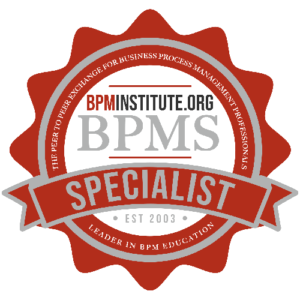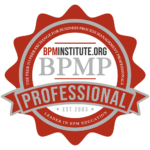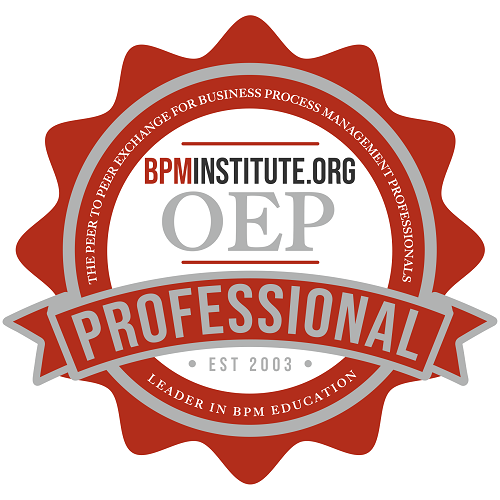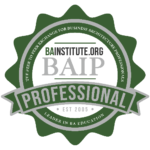A Strategic Guide for BPM Beginners
Process improvement looks simple—on paper. Draw a map, fix a few issues, and everything should run smoother. But in practice, many Business Process Management (BPM) efforts struggle before they even get going. Not because teams don’t care or try hard enough, but because they miss a few critical foundations.
For newcomers to BPM, it’s not the tools or terminology that cause trouble. It’s the assumptions. Assuming that a project mandate means clarity and alignment. That having delegated subject matter experts equals access to full information. That fixing one part of the process will fix the whole.
For many beginners, BPM starts with a single project when something broken needs fixing. That’s a good entry point. But if your mandates remain there, you risk becoming part of a disconnected improvement effort. BPM is most powerful when it grows into an organizational capability: a repeatable way of improving, aligning, and governing how work gets done.
This article unpacks six early pitfalls that can derail that progression, and offers grounded, practical advice on how to avoid them. Whether you’re a business analyst, team lead, or emerging BPM practitioner, these lessons will help you build a foundation that lasts.
- Lack of Strategic Alignment and Leadership Support
When process work is disconnected from organizational goals, it becomes easy to ignore for stakeholders. Without visible executive support, BPM efforts tend to be sidelined the moment other priorities emerge.Leaders don’t need to much of the work in your initiative—but they do need to own it. Their endorsement should be more than ceremonial. They should understand how process improvement supports a real business objective, and they should be willing to protect the time and space needed to make progress.What to do instead:
Anchor the work in a clear, visible business priority. Show how process thinking contributes to solving something the organization already wants to fix. If you’re unsure how to make the link, speak to a strategy lead or IT manager—they often have a broader view of where process improvements can land. - Mistaking BPM for a One-Off Project
Process work isn’t a task to complete; it’s a capability to develop. But beginners often approach it like a deliverable: map the flow, optimize a few steps, then move on. The problem with this mindset is that it stops the learning cycle before it really starts.Another risk is overshooting. When teams create sophisticated models or automation plans that exceed the organization’s readiness, the process becomes too complex to adopt. Instead of progress, you get paralysis.BPM can begin with a project—but it shouldn’t end there. Each initiative should reinforce the mindset and infrastructure needed for sustained process improvement. Over time, this builds the muscle memory for more responsive, aligned, and adaptive organizations.What to do instead:
Meet the organization where it is. Deliver improvements that fit the current culture and capabilities, and use each success to build toward a stronger BPM practice. Don’t expect perfection. Aim to help the business grow into maturity. - Skipping Current-State Analysis
Redesigning a process without understanding how it works today is like prescribing treatment without a diagnosis. Yet many teams skip this step, assuming the existing process is too broken to bother with.That’s a mistake. The current state holds clues about what actually happens—not just what’s documented. It reveals hidden workarounds, informal approvals, handoff delays, and system constraints. It also gives you a baseline for performance. Without that, you won’t know if your changes made anything better.What to do instead:
Document how the process currently works, and measure what matters. Where does the work get stuck? What does success look like now, and how will you know when it improves? These questions form the foundation of any meaningful change. - Overlooking the People Side of Change
A process that works in theory will fail in practice if people aren’t ready for it. Resistance to change isn’t always loud; sometimes it shows up as disengagement, workarounds, or quiet refusal.This is especially true when people weren’t consulted during analysis and design, or when they perceive the change as extra work with unclear benefit. If the rollout skips communication and training, adoption will lag—or stall entirely.What to do instead:
Treat process change as something you do with people, not to them. Explain why the change matters, how it helps, and what support is available. Invite early feedback, not just after-the-fact reactions. Trust builds alignment—and alignment drives adoption. - Working in Silos and Missing the Whitespace
Process work often begins in a department, because that’s where pain is most visible. But optimizing tasks inside one team won’t fix a process that spans many. In fact, the biggest improvements usually happen between departments—where work is handed off, delayed, or lost.Practitioners also get trapped in task-level thinking. They map activities but miss the journey. They clean up individual steps but ignore how the pieces connect. As a result, the process looks more efficient but still feels broken.What to do instead:
Zoom out. Follow the work across boundaries, not just within your team. Look for delays, duplicate effort, unclear ownership. These “whitespace” zones between silos are where major gains hide. And if you need visibility or buy-in across departments, seek help from IT, operations, or governance leaders who already think system-wide. - Designing Without Stakeholders or Customers
Processes exist to serve someone—internal teams, external clients, or both. Yet beginners sometimes design workflows based on ideal logic rather than real-world use. They model the “right” way to work but skip asking how work actually gets done.If you don’t include the people who use the process, you’re guessing. Worse, if you change a process that touches customers without understanding their experience, you risk creating new problems instead of solving old ones.What to do instead:
Talk to the people involved. Ask employees where the process breaks down. Walk through the journey as a customer would. Where do they get stuck? Where do they wait or repeat themselves? These points of friction are insights in disguise. When users see that their voices shaped the outcome, they’re more likely to really use the result.
Process Work Is Culture Work
Every one of these mistakes is about more than process. Each one points to how your organization shares knowledge, makes decisions, and adapts. Process work isn’t just operational. It’s cultural.
Projects are a gateway; discipline is the destination.
If you treat BPM as a technical fix, you’ll get short-term gains that fade. But if you treat it as a way to align people, clarify purpose, and build shared habits, the impact goes much deeper.
That doesn’t mean trying to “change culture” through a single initiative. It means modeling the behavior you want to see: transparency, feedback, collaboration, learning. That’s what process maturity really looks like.
Call to Action: Your Process Readiness Checklist
Before launching your next BPM effort, pause and ask:
- What problem are we trying to solve?
- Is there leadership support beyond just approval?
- Have we captured and measured the current state?
- Do the people doing the work trust the change?
- Are we working across silos, or stuck in one?
- Have we tested the experience with customers or end-users?
If you’re missing more than one, take a step back. Strong foundations aren’t a delay—they’re how you build lasting momentum.

















